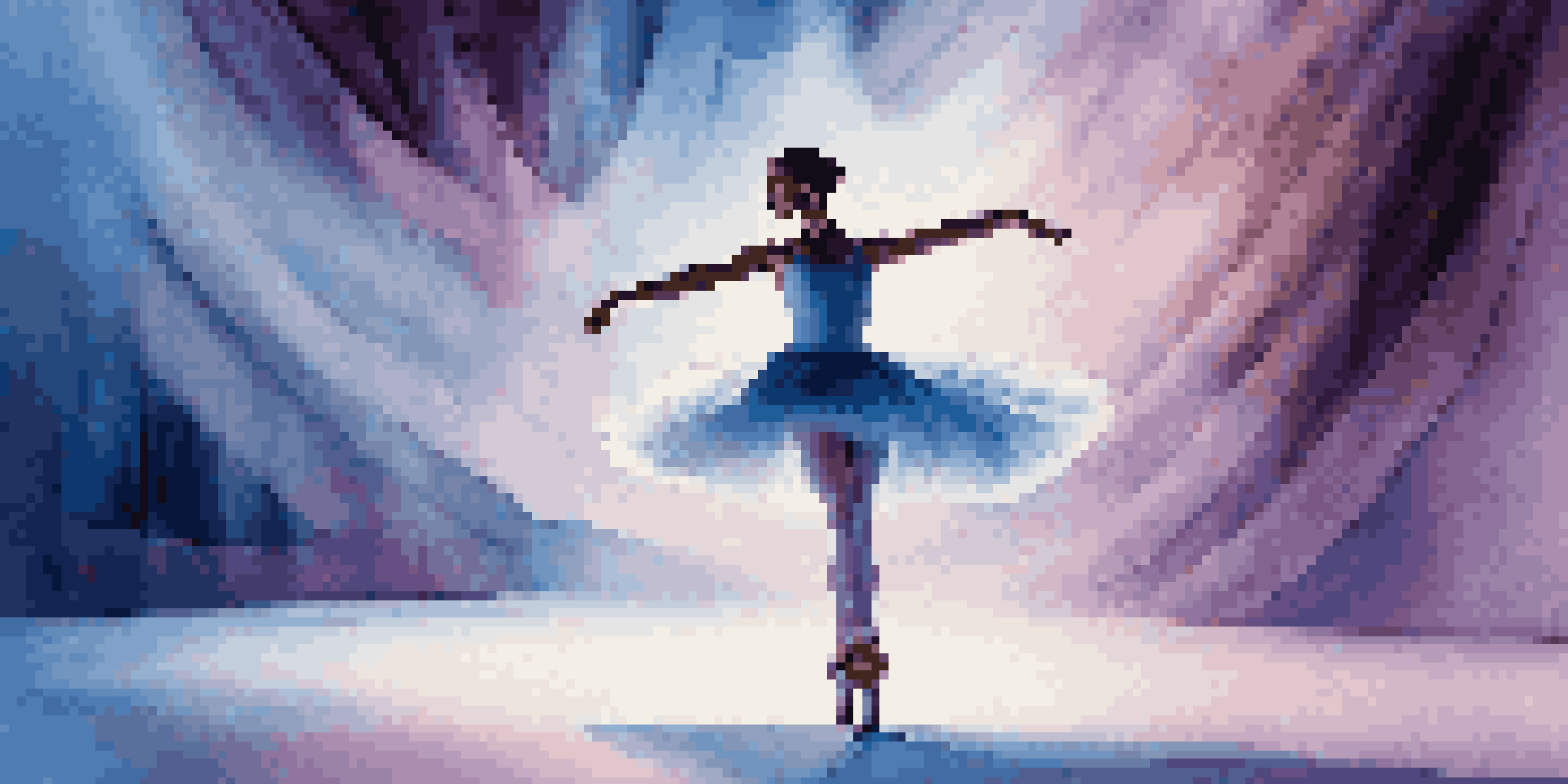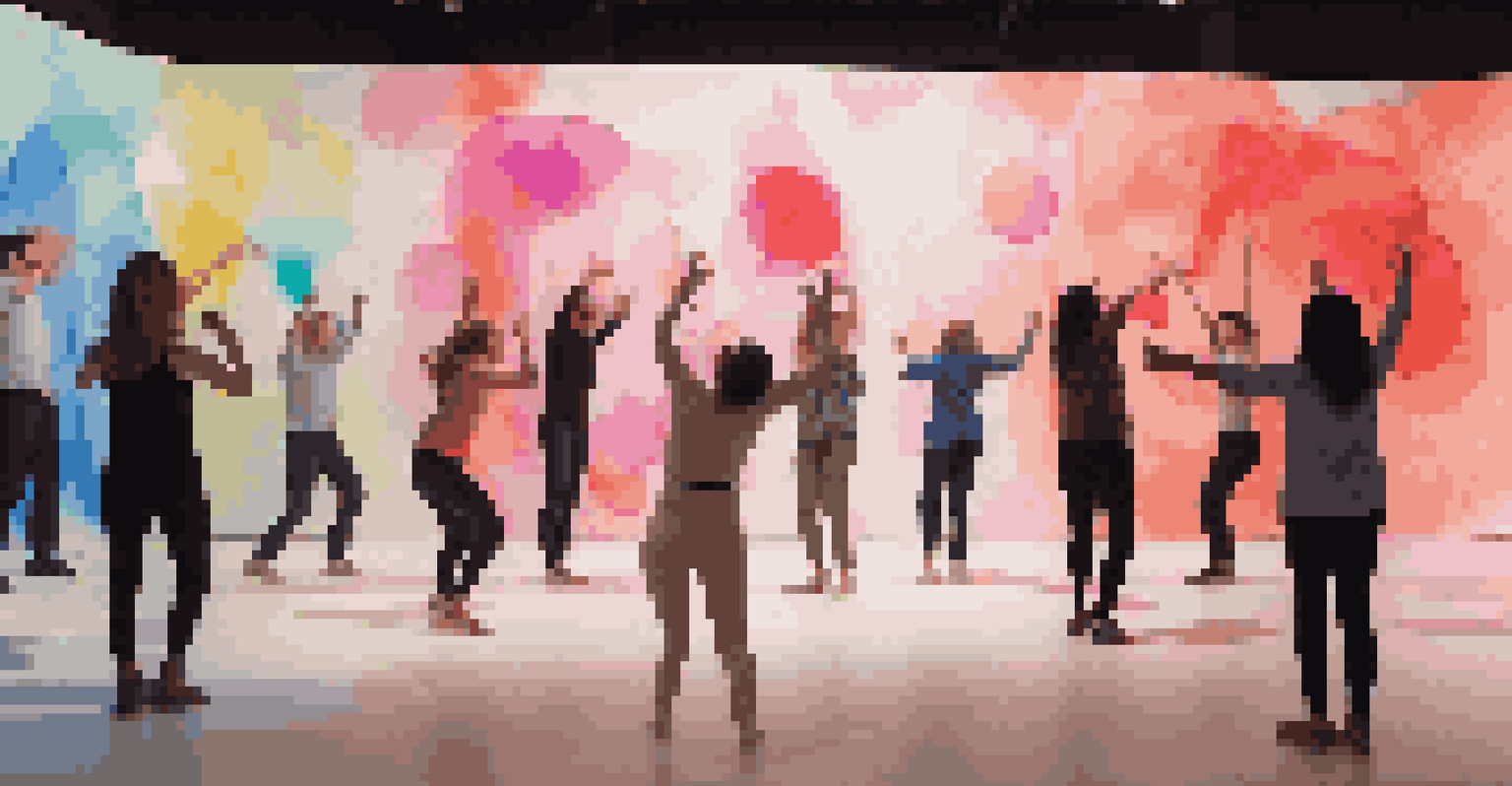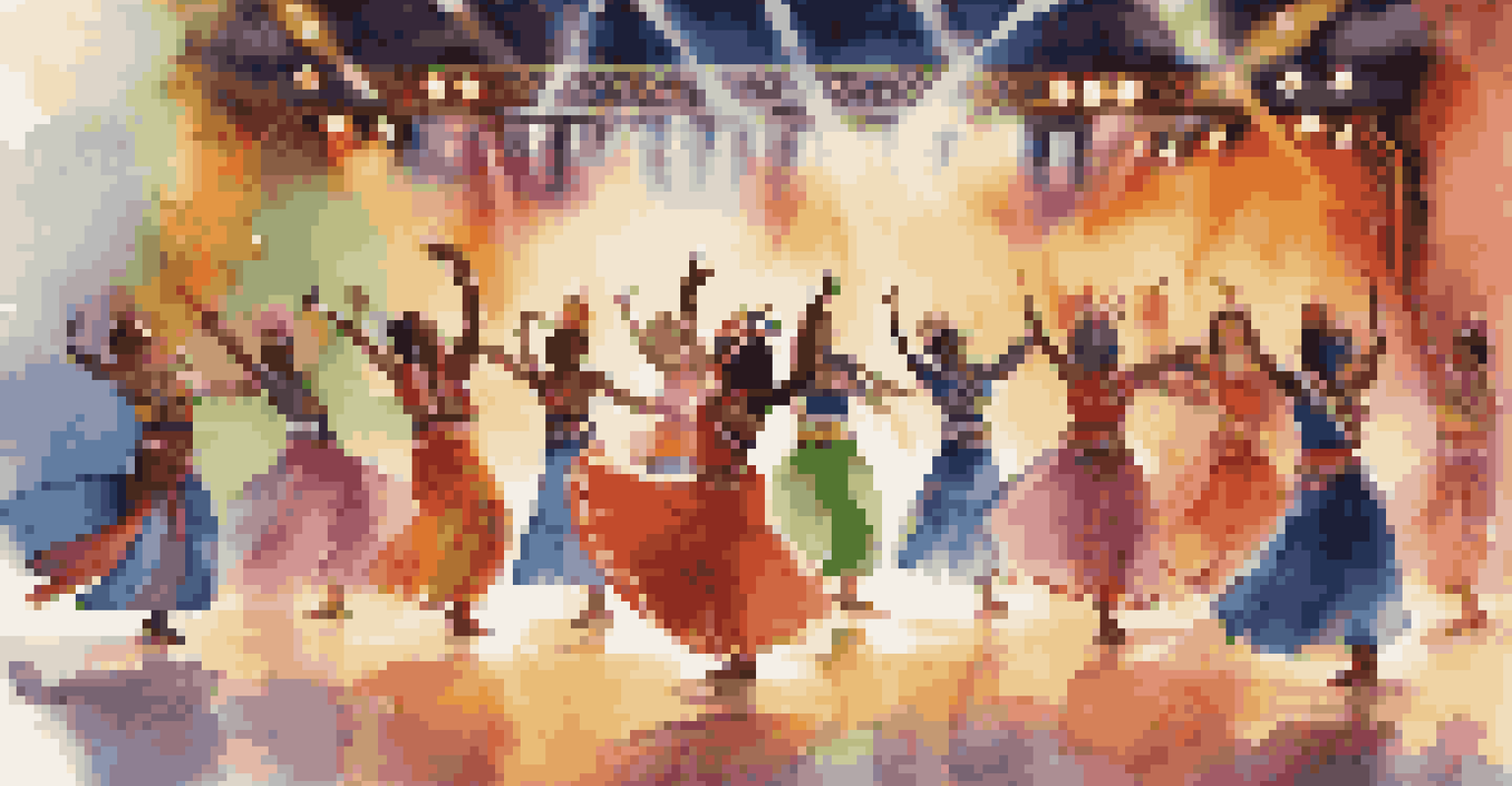Exploring Motion: Dance's Influence on Digital Art Forms

The Interplay of Dance and Digital Art
Dance and digital art may seem like distinct forms of expression, but they share a vibrant connection. Both mediums explore movement, emotion, and storytelling, each enhancing the other in unique ways. As technology advances, artists are finding innovative ways to blend dance with digital landscapes, creating immersive experiences that captivate audiences.
Dance is the hidden language of the soul.
For instance, choreographers are now using motion capture technology to translate dance into digital animations. This process allows dancers’ movements to be recorded and transformed into visual art that can be manipulated and displayed in various formats. As a result, the fluidity of dance can be experienced in a static digital medium, showcasing the beauty of movement in new dimensions.
Moreover, digital art can serve as a canvas for dance performances, where projected visuals enhance the storytelling aspect of choreography. This synthesis of disciplines encourages viewers to appreciate the nuances of both art forms, creating a richer experience that resonates on multiple levels.
How Technology is Shaping Dance
Technology has revolutionized the way dance is created, performed, and experienced. With tools like augmented reality (AR) and virtual reality (VR), choreographers can now design performances that transcend physical limitations. Imagine a ballet dancer performing on a digital stage where the backdrop shifts and evolves in response to their movements—this is the future of dance.

These technologies allow for a more interactive experience, where audiences can engage with the performance in real-time. For instance, a viewer wearing VR goggles might find themselves on stage with the dancers, fully immersed in the performance. This not only enhances engagement but also opens up new avenues for artistic expression that were once unimaginable.
Dance Meets Digital Art Innovation
The integration of dance and digital art creates immersive experiences that enhance storytelling and emotional connection.
Furthermore, social media platforms have provided dancers with a new way to share their art with a global audience. Viral dance challenges and performances spread rapidly, influencing trends and inspiring collaborations across the digital landscape. In this way, technology acts as both a tool and a platform, fostering a vibrant dance community online.
The Role of Motion Capture in Art
Motion capture technology has become a game-changer for artists interested in blending dance with digital art. By recording the intricate movements of dancers, artists can create lifelike animations that convey the essence of physicality. This process captures not just the movement, but also the emotion and energy that dancers bring to their art.
Art is not freedom from discipline, but disciplined freedom.
For example, animated films often utilize motion capture to bring characters to life, making their movements more realistic and relatable. When dance is incorporated into these animations, it adds a layer of authenticity and dynamism that resonates with viewers. This blend of technology and artistry allows for storytelling that feels both innovative and grounded.
Moreover, motion capture opens up possibilities for creating interactive installations where viewers can influence the animation based on their own movements. This creates a unique dialogue between the audience and the artwork, blurring the lines between performer and observer, and transforming the experience into something truly collaborative.
Choreography as Digital Art
Choreography itself can be viewed as a form of digital art, especially when it incorporates elements of technology. Dancers often use software to visualize their movements, helping them plan and refine their routines. This integration of digital tools not only enhances the creative process but also allows for more complex and innovative performances.
For instance, choreographers may use apps to create 3D models of their routines, enabling them to see how different movements interact spatially. This visualization can spark new ideas and inspire fresh choreography that might not have emerged through traditional methods. In this way, digital tools become an extension of the choreographer's imagination.
Technology Transforms Dance Creation
Advanced technologies like VR and motion capture are revolutionizing how choreography is designed, performed, and experienced.
Additionally, as dance is increasingly shared online, it gains recognition as a legitimate art form within the digital realm. Social media platforms provide a stage for dancers to showcase their work, making choreography accessible to wider audiences and encouraging collaboration across disciplines. This has transformed how dance is perceived and appreciated in contemporary culture.
The Influence of Dance on Interactive Media
Dance influences various forms of interactive media, such as video games and installations, where movement is a central component. Game designers often draw inspiration from dance styles to create engaging movement mechanics that enhance gameplay. This cross-pollination of ideas leads to richer experiences for players, merging physicality with digital engagement.
Take, for example, rhythm-based games where players mimic dance moves in sync with the music. These games not only encourage physical movement but also allow players to express themselves through dance. This interaction creates a sense of community as players share their scores and dance styles, fostering a culture centered around movement and creativity.
Furthermore, immersive installations that incorporate dance allow viewers to interact with the art in a physical space. These experiences challenge traditional notions of spectatorship, turning viewers into participants. As they move through the installation, their actions influence the visuals and sounds, creating a personalized experience that highlights the impact of dance on interactive storytelling.
Exploring Cultural Narratives through Dance
Dance is not just movement; it carries deep cultural narratives and histories that can be expressed through digital art. Artists often use dance to explore and convey stories that reflect their backgrounds, communities, and experiences. By intertwining dance with digital representation, these narratives reach wider audiences, fostering understanding and appreciation of diverse cultures.
For example, digital art projects that incorporate traditional dance forms can help preserve cultural heritage while also appealing to contemporary audiences. This blend of old and new creates a dialogue that respects tradition while embracing innovation. As a result, viewers are invited to engage with cultural stories in fresh and meaningful ways.
Cultural Narratives Through Movement
Dance serves as a powerful medium for expressing cultural stories, particularly when combined with digital representation for broader audiences.
Additionally, the accessibility of digital platforms allows for the global sharing of these narratives. Dancers from different regions can collaborate online, creating fusion performances that celebrate their unique heritages. This exchange of ideas and styles enriches the digital art landscape, highlighting the universal language of dance.
The Future of Dance in Digital Art
The future of dance within digital art is brimming with possibilities, as artists continue to push boundaries and explore new technologies. As artificial intelligence (AI) evolves, we may see its integration into choreography, where algorithms help generate movement patterns. This could lead to entirely new forms of dance that challenge our perceptions of creativity and originality.
Moreover, as virtual and augmented reality technologies become more sophisticated, the line between physical and digital performances will blur even further. Imagine attending a live performance that seamlessly merges with a virtual experience, where the audience and dancers interact in real-time. Such innovations promise to redefine how we experience and understand dance.

Ultimately, the fusion of dance and digital art will continue to inspire new generations of artists. By embracing technology while honoring the essence of movement, the future holds exciting potential for creating art that is not only visually stunning but also deeply resonant on emotional and cultural levels.